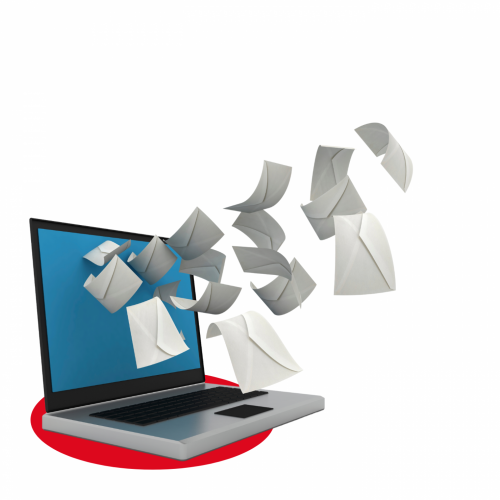Say no to digital pollution: clean your mailboxes!

Say no to digital pollution: clean your mailboxes!
In 2020, nearly 306.4 billion emails (Statista) were sent all around the world every day. All these emails are stored in Data Centers operating 24/7. These latter consume the equivalent of five nuclear power plants in the world. Why ? Because they consume a lot of energy, especially because they need to be cooled constantly. This is called "sleepy pollution".
Indeed, even to fly over to your colleague's office next door, your email must imperatively pass through your mailbox server and therefore through a Data Center. Once the email has been sent and received, the time comes for storage, which also generates CO2. Because again, keeping this email requires calling on one or more Data Centers. An email generates 10g of CO2, i.e. a low-consumption bulb lit for 1 hour.
To assess these figures, let's take the example of a company in France with 100 employees. On average, each employee receives 58 emails and sends 33 per day. This company then generates 13.6 tonnes of CO2 equivalent each year (just with its e-mail), the equivalent of 13 round trips by plane to Paris and New York. (ADEME).
As a reminder, more than 4% of greenhouse gas emissions come from the digital sector. A figure that could double by 2025, especially with the increase in teleworking.
> How to reduce the pollution of your mailbox?
The goal is not to stop using emails, but to manage them better!
- Limit the number of emails sent to pollute less:
Some information could be given by phone call, or summarized in a single email. This is a very simple first step that can be taken immediately.
- Target recipients and reduce group shipments:
Sending an email to 10 recipients multiplies the impact on climate change by 4, (ADEME ). So try not to increase the number of recipients (ask yourself if each recipient really needs to receive your message) and thus avoid unwanted and uncontrolled use of email.
- Store locally:
Storing messages on servers consumes electricity. Globally, data storage centers consume 1.5% of the world's electricity. And since they are mainly powered by coal plants, they are responsible for 2% of CO2 emissions (GreenPeace). It is therefore recommended, as much as possible, to store information on hard disks or locally, rather than on servers.
- Send compressed images and hyperlinks:
Attachments make your email even more polluting. Consider compressing your images or creating hyperlinks to reduce the size of the message.
- Unsubscribe from unnecessary mailing lists:
Take the trouble to unsubscribe from newsletters and bulk emails that you receive if they are not of interest to you.
- Clean up your emails regularly:
The longer an email is stored on a server, the more negative its impact on the environment. So why keep messages that you will never need again? Get into the habit of deleting your messages rather than archiving them and regularly clean your inbox, deleting spam and emptying the trash.
To make your work easier, the Cleanfox website offers to help you delete all your received and unread newsletters. The result is quite impressive!
Since the volume of stored data doubles every two years, deleting your emails frequently would be a good resolution to take!
So, what if you just had to delete your old emails to do an ecological gesture?
